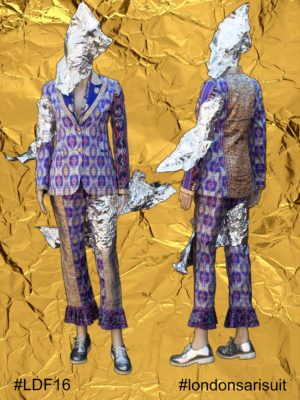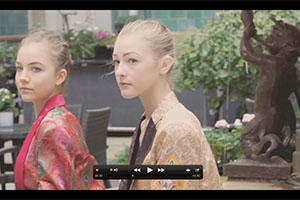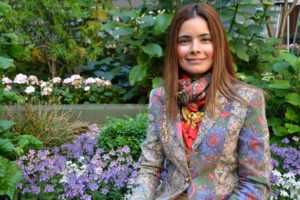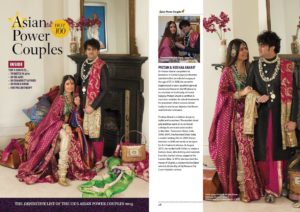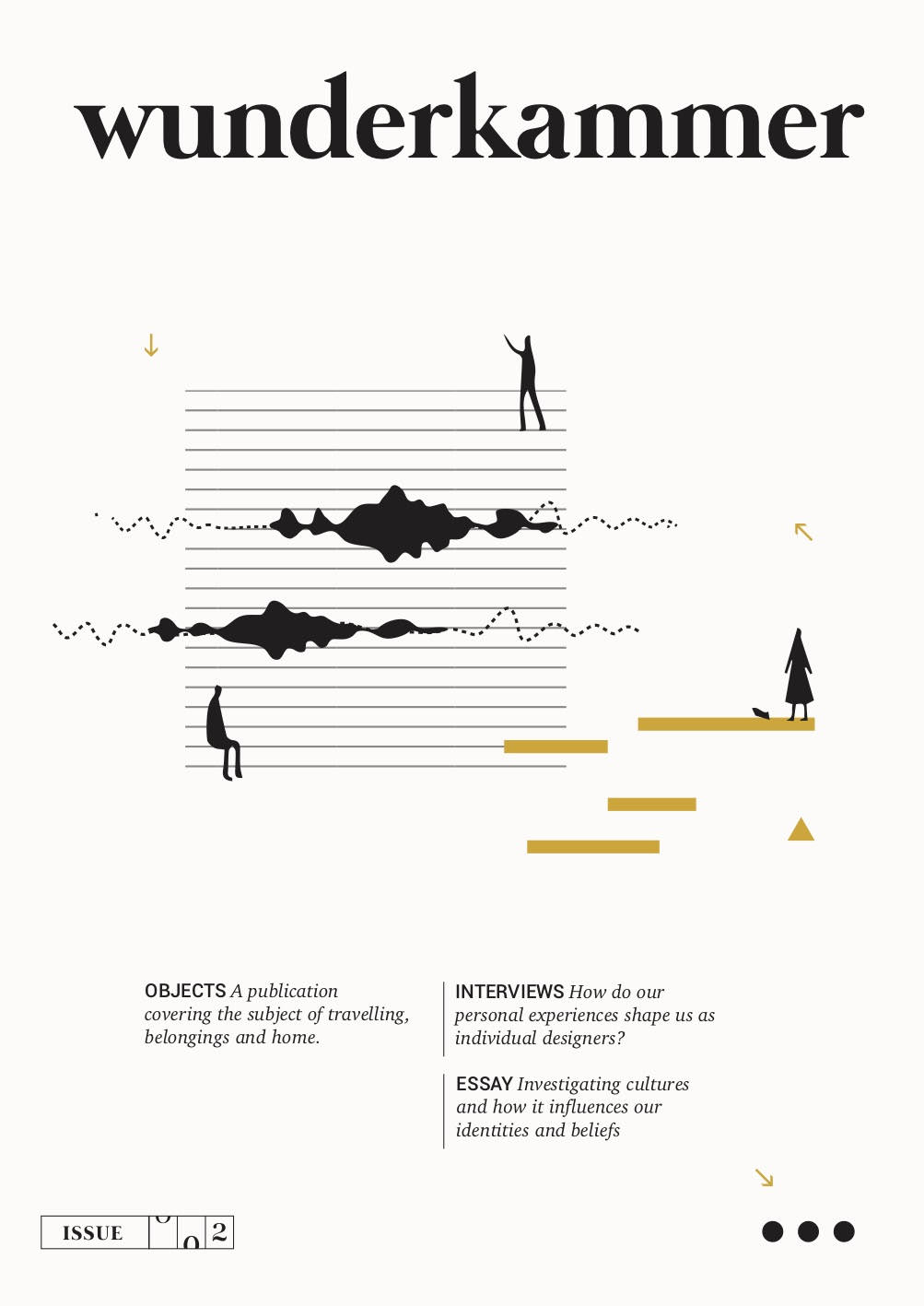
What is Wunderkammer?
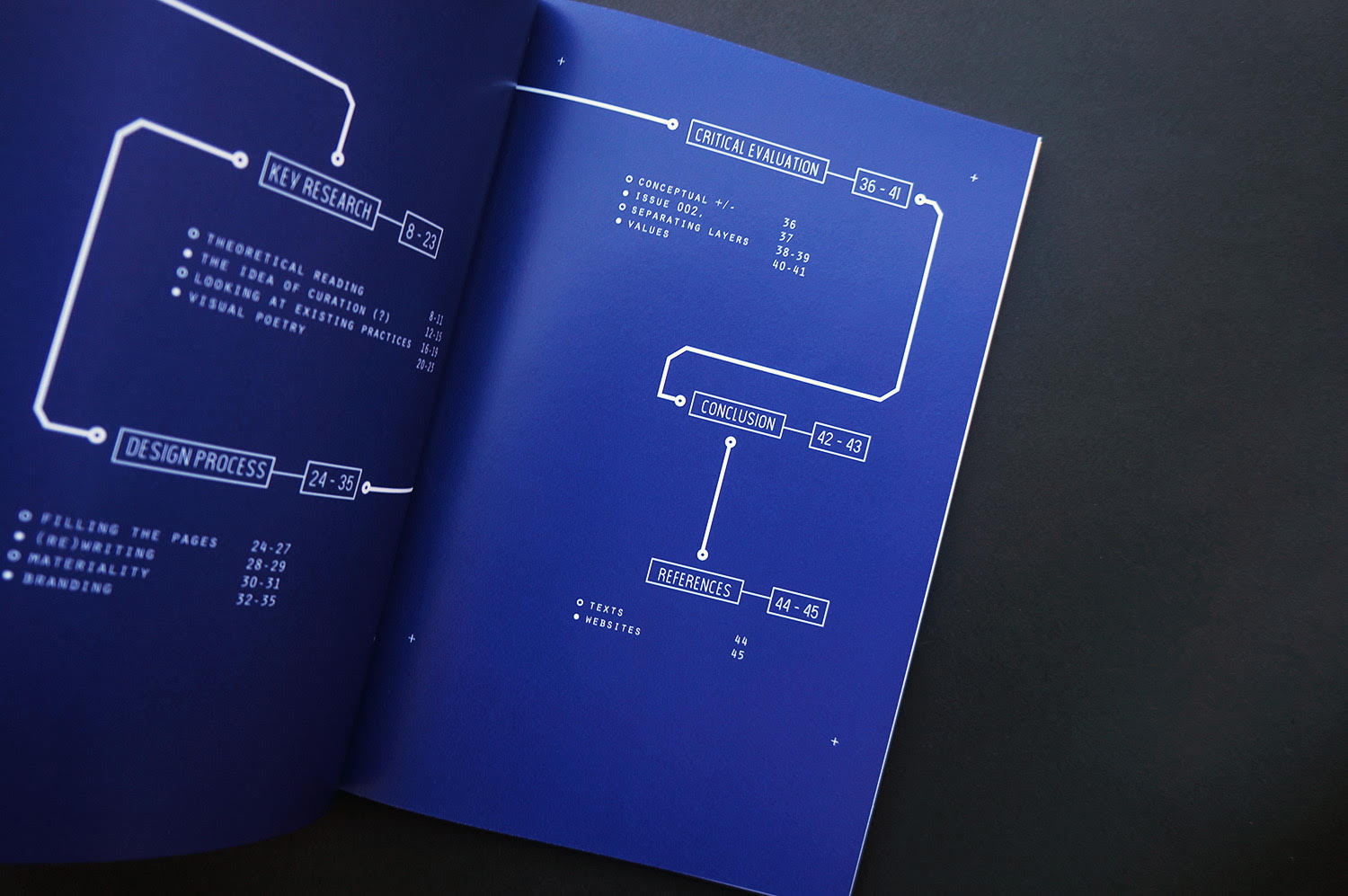
Wunderkammer introduced the idea of curation, and that these objects that are placed on display do not necessarily have to be expensive works of art. Applying these similar thoughts to the concept of the publication, the underlying key concepts for this project are curiosity, transition and
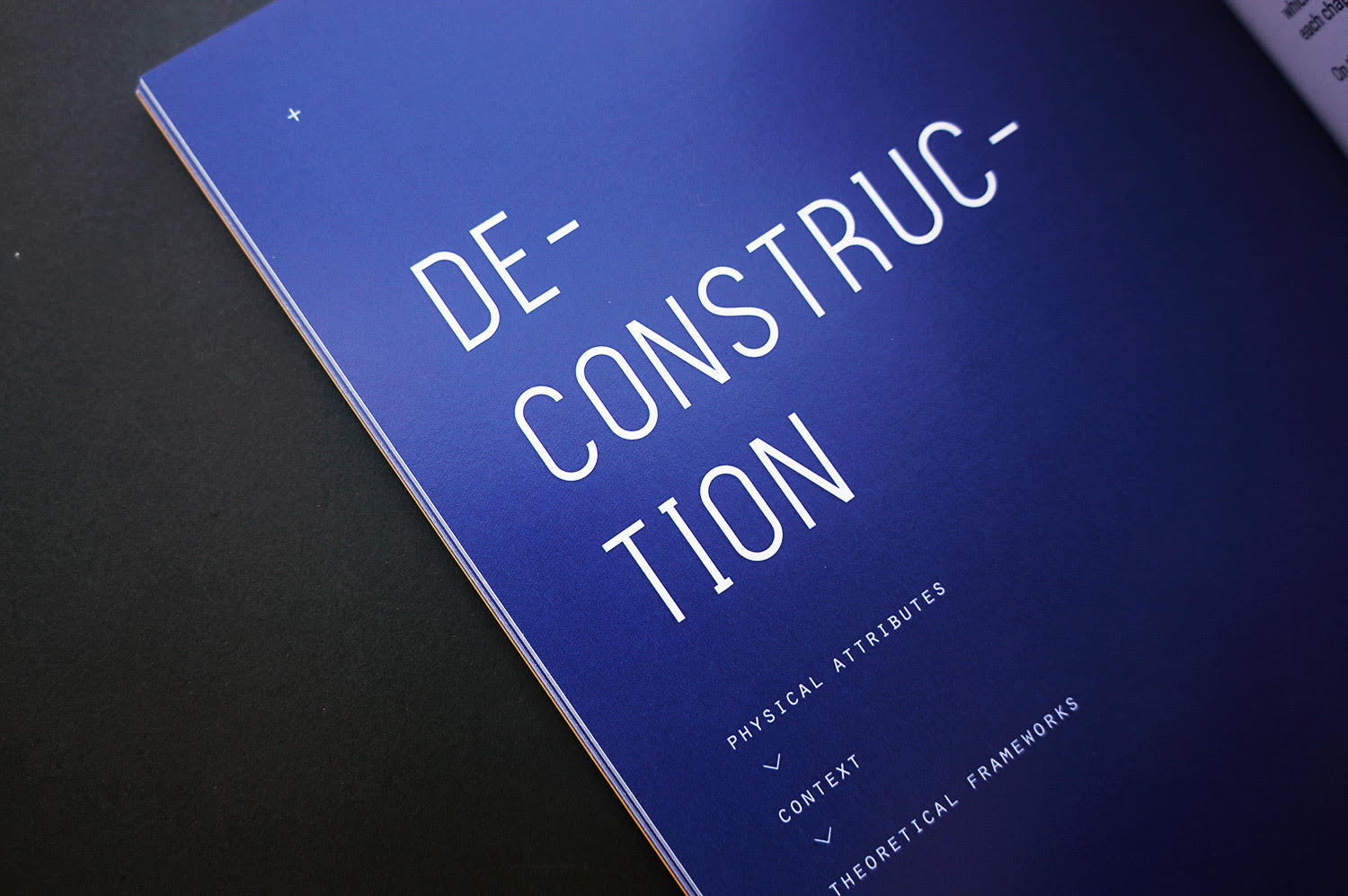
Cassandra Tang interviews Neishaa Gharat for Wunderkammer, a Publication.
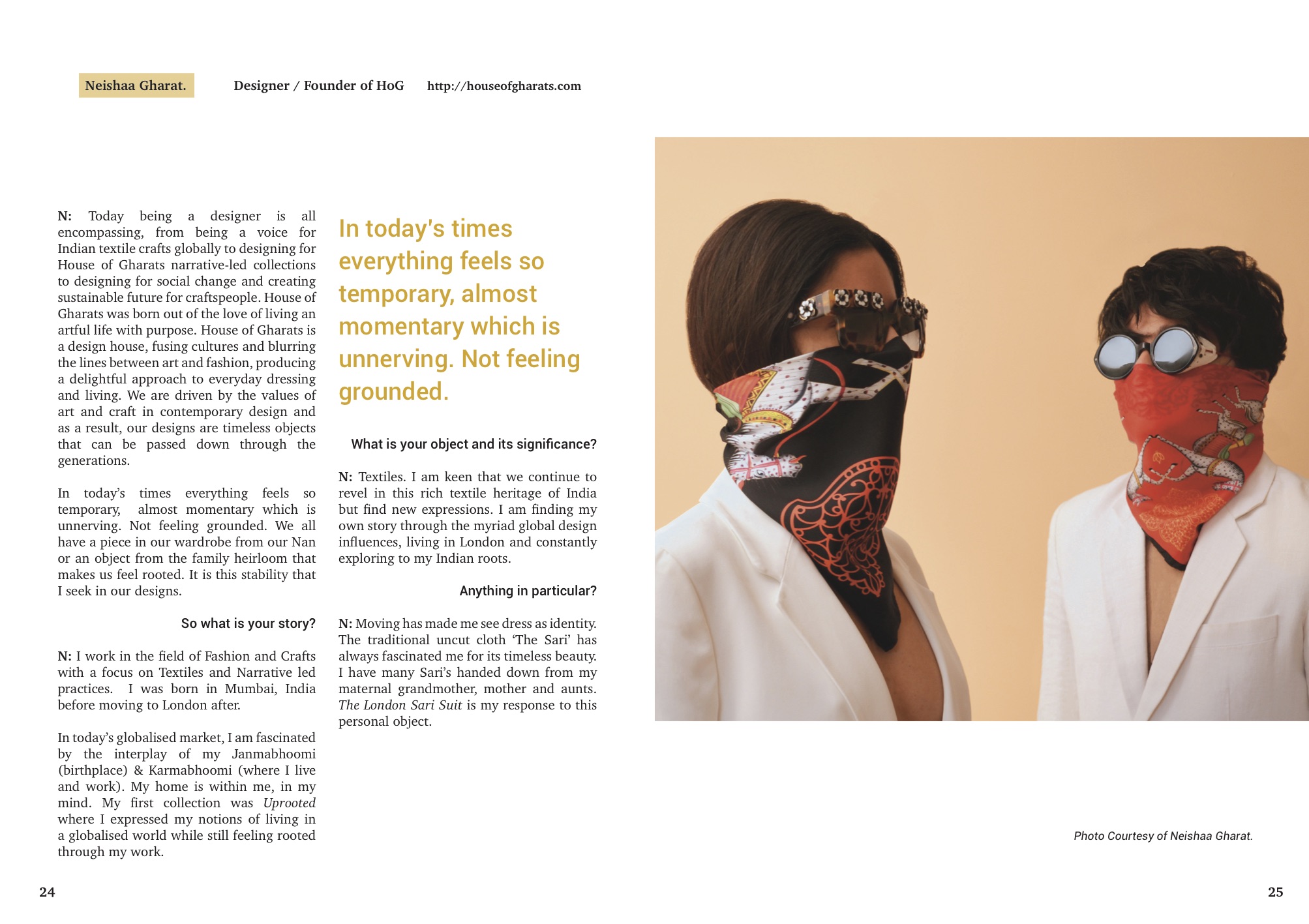
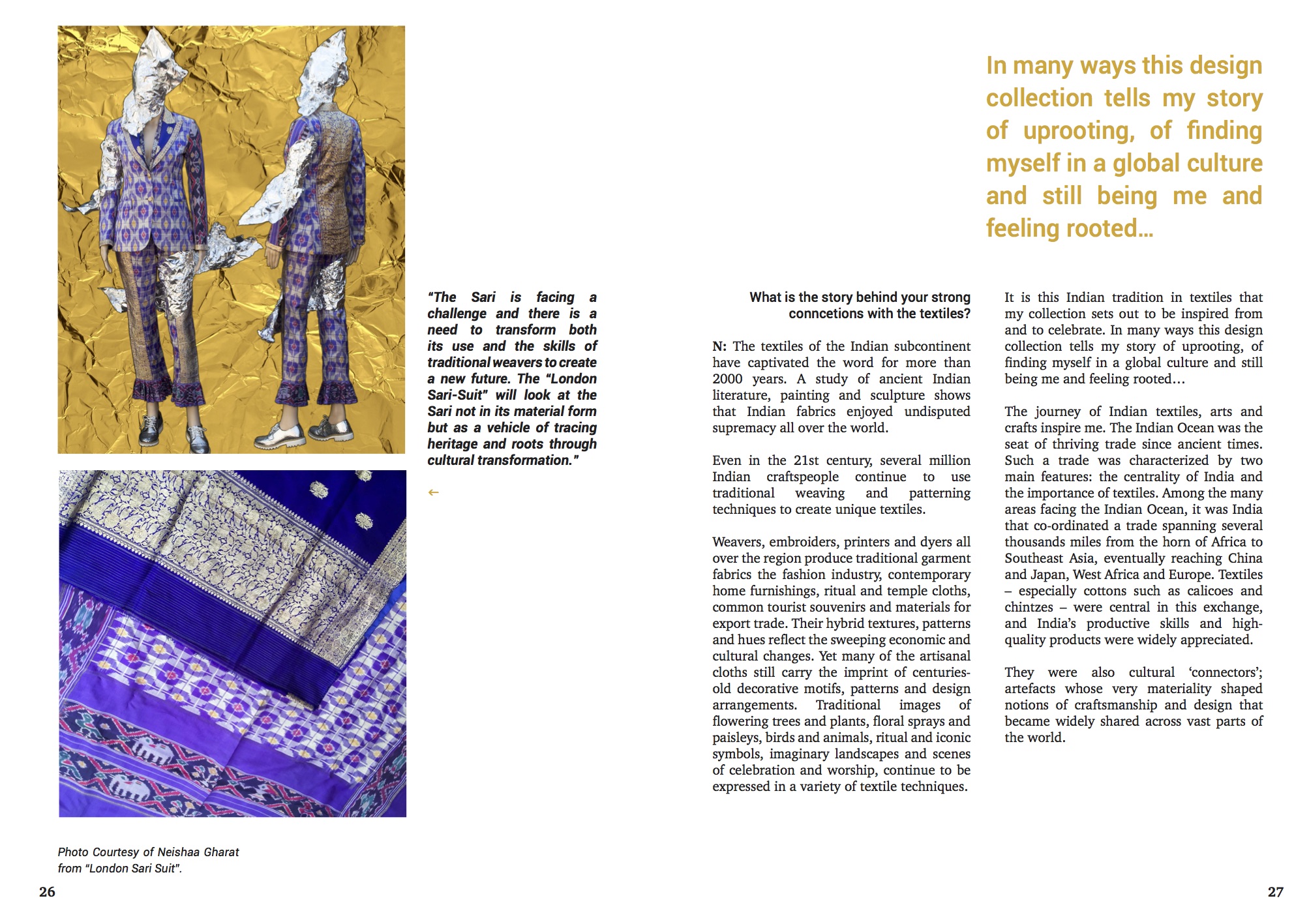
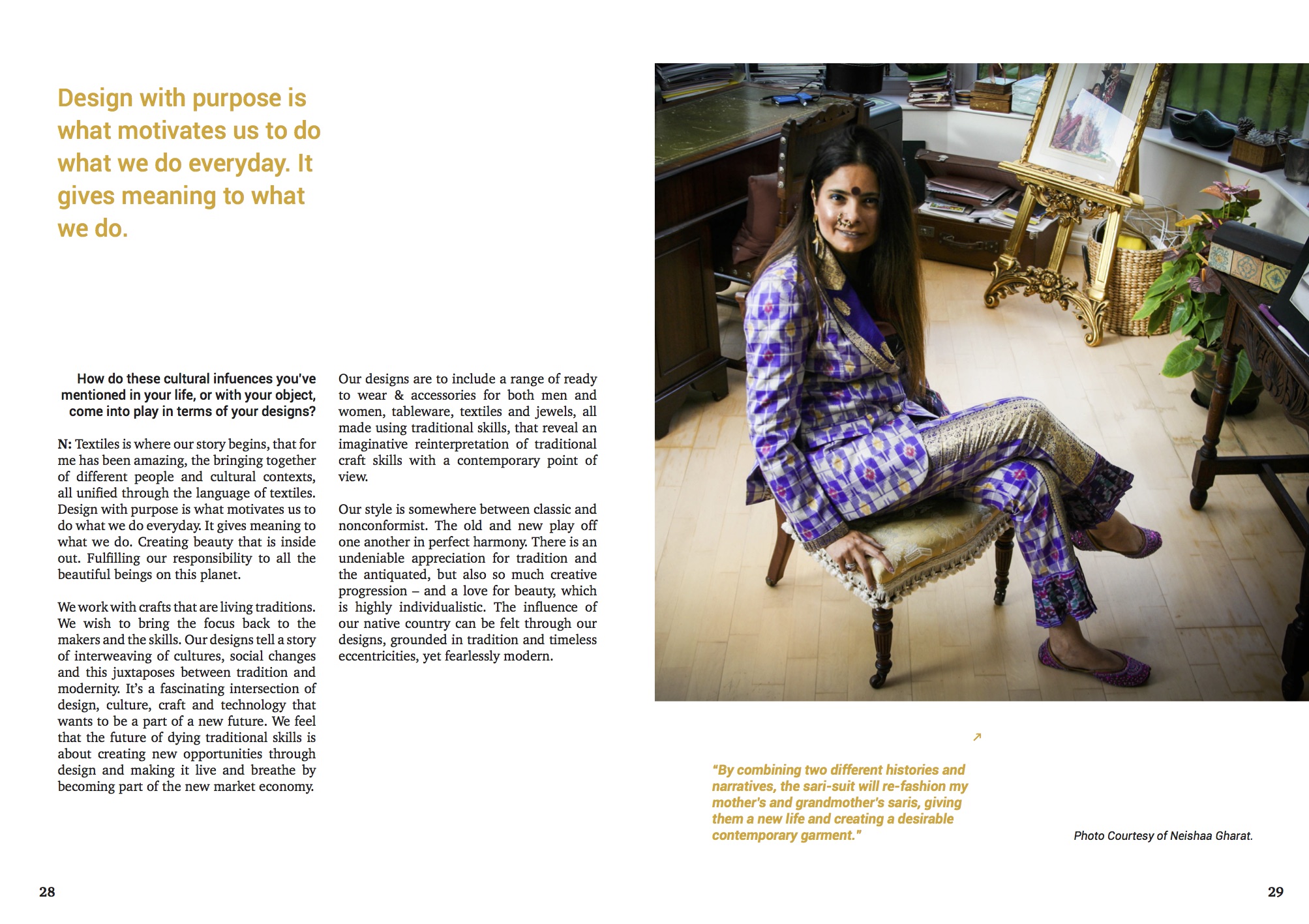
Transcript
In today’s times everything feels so temporary, almost momentary which is unnerving. Not feeling grounded.
In today’s times everything feels so temporary, almost momentary which is unnerving. Not feeling grounded. We all have a piece in our wardrobe from our Nan or an object from the family heirloom that makes us feel rooted. It is this stability that I seek in our designs.
So what is your story?
Neishaa: I work in the eld of Fashion and Crafts with a focus on Textiles and Narrative led practices. I was born in Mumbai, India before moving to London after.In today’s globalised market, I am fascinated by the interplay of my Janmabhoomi (birthplace) & Karmabhoomi (where I live and work). My home is within me, in my mind. My rst collection was Uprooted where I expressed my notions of living in a globalised world while still feeling rooted through my work.In today’s times everything feels so temporary, almost momentary which is unnerving. Not feeling grounded.
What is your object and its signi cance?
Neishaa: Textiles. I am keen that we continue to revel in this rich textile heritage of India but nd new expressions. I am nding my own story through the myriad global design in uences, living in London and constantly exploring to my Indian roots.
Anything in particular?
Neishaa: Moving has made me see dress as identity. The traditional uncut cloth ‘The Sari’ has always fascinated me for its timeless beauty. I have many Sari’s handed down from my maternal grandmother, mother and aunts. The London Sari Suit is my response to this personal object.
In many ways this design collection tells my storyof uprooting, of ndingmyself in a global culture and still being me and feeling rooted…
What is the story behind your strong conncetions with the textiles?
Neishaa: The textiles of the Indian subcontinent have captivated the word for more than 2000 years. A study of ancient Indian literature, painting and sculpture shows that Indian fabrics enjoyed undisputed supremacy all over the world.
Even in the 21st century, several million Indian craftspeople continue to use traditional weaving and patterning techniques to create unique textiles.
Weavers, embroiders, printers and dyers all over the region produce traditional garment fabrics the fashion industry, contemporary home furnishings, ritual and temple cloths, common tourist souvenirs and materials for export trade. Their hybrid textures, patternsand hues re ect the sweeping economic andcultural changes. Yet many of the artisanal cloths still carry the imprint of centuries- old decorative motifs, patterns and design arrangements. Traditional images ofowering trees and plants, oral sprays andpaisleys, birds and animals, ritual and iconic symbols, imaginary landscapes and scenes of celebration and worship, continue to be expressed in a variety of textile techniques.
In many ways this design collection tells my storyof uprooting, of ndingmyself in a global culture and still being me and feeling rooted…
It is this Indian tradition in textiles that my collection sets out to be inspired from and to celebrate. In many ways this design collection tells my story of uprooting, ofnding myself in a global culture and stillbeing me and feeling rooted…
The journey of Indian textiles, arts and crafts inspire me. The Indian Ocean was the seat of thriving trade since ancient times. Such a trade was characterized by two main features: the centrality of India and the importance of textiles. Among the many areas facing the Indian Ocean, it was India that co-ordinated a trade spanning several thousands miles from the horn of Africa to Southeast Asia, eventually reaching China and Japan, West Africa and Europe. Textiles – especially cottons such as calicoes and chintzes – were central in this exchange, and India’s productive skills and high- quality products were widely appreciated.
They were also cultural ‘connectors’; artefacts whose very materiality shaped notions of craftsmanship and design that became widely shared across vast parts of the world.
Design with purpose is what motivates us to do what we do everyday. It gives meaning to what we do.
How do these cultural infuences you’ve mentioned in your life, or with your object, come into play in terms of your designs?
Neishaa: Textiles is where our story begins, that for me has been amazing, the bringing together of different people and cultural contexts,all uni ed through the language of textiles.Design with purpose is what motivates us to do what we do everyday. It gives meaning to what we do. Creating beauty that is insideout. Ful lling our responsibility to all thebeautiful beings on this planet.
We work with crafts that are living traditions. We wish to bring the focus back to the makers and the skills. Our designs tell a story of interweaving of cultures, social changes and this juxtaposes between tradition and modernity. It’s a fascinating intersection of design, culture, craft and technology that wants to be a part of a new future. We feel that the future of dying traditional skills is about creating new opportunities through design and making it live and breathe by becoming part of the new market economy.
Our designs are to include a range of ready to wear & accessories for both men and women, tableware, textiles and jewels, all made using traditional skills, that reveal an imaginative reinterpretation of traditional craft skills with a contemporary point of view.
Our style is somewhere between classic and nonconformist. The old and new play off one another in perfect harmony. There is an undeniable appreciation for tradition and the antiquated, but also so much creative progression – and a love for beauty, whichis highly individualistic. The in uence ofour native country can be felt through our designs, grounded in tradition and timeless eccentricities, yet fearlessly modern.
